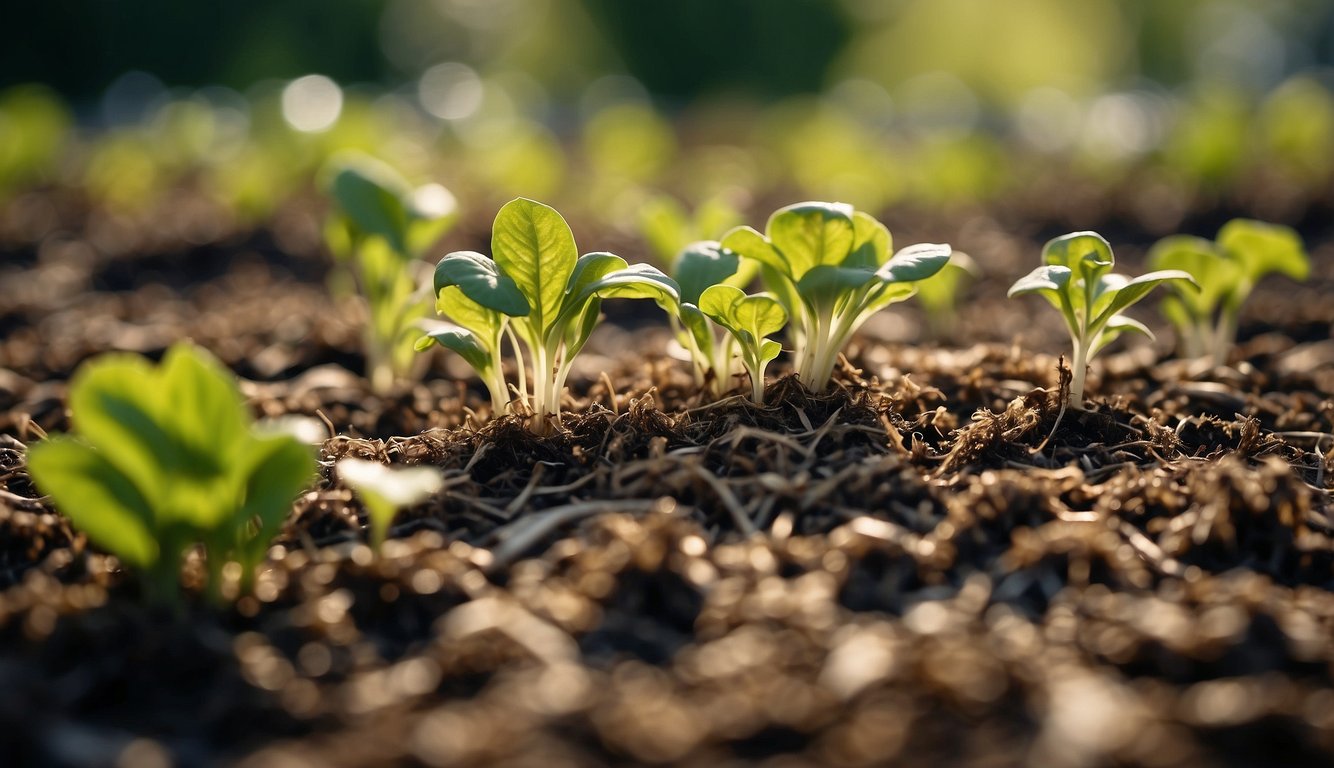TheHerbProf.com is a treasure trove of knowledge for those interested in natural healing and herbal remedies. The website is run by Paul Johnston MD. A naturopathic who has not only received extensive education in the field but also has personal experience in self-healing.
I love the idea to grow your own food from scraps. Not only is it a great way to save money, but it also helps to reduce food waste and provides me with fresh produce. It’s amazing how many fruits and vegetables can be regrown from scraps that would otherwise be thrown away.
One of the easiest things to regrow from scraps is lettuce. Instead of throwing away the bottom of a lettuce head, simply place it in a shallow dish of water and watch as new leaves begin to grow. This is a great way to have a constant supply of fresh lettuce without having to buy it at the store.
Another vegetable that can be regrown from scraps is celery. Simply cut off the bottom of a bunch of celery and place it in a shallow dish of water. Within a few days, new roots will begin to grow, and you can transplant it into soil. This is a great way to have fresh celery on hand for cooking and snacking.
Getting Started with Scrap Gardening
Understanding the Basics
If you’re interested in growing your own food from scraps, you’re in the right place! Scrap gardening is an excellent way to reduce food waste, save money, and produce fresh, organic produce. The process is simple and can be done with just a few basic tools and materials.
First, it’s important to understand that not all kitchen scraps are created equal. Some scraps, like avocado pits and citrus seeds, are difficult to grow and may not yield good results. Other scraps, like carrot tops, onion bottoms, and potato eyes, are easy to grow and can produce delicious results.
Essential Tools and Materials
To get started with scrap gardening, you’ll need a few essential tools and materials. Here’s what you’ll need:
- Soil: You’ll need a good quality soil to grow your scraps. Look for a soil that is rich in nutrients and has good drainage.
- Water: Your scraps will need water to grow, so make sure you have a good watering can or hose.
- Containers: You’ll need containers to plant your scraps in. Look for containers that are the right size for your scraps and have good drainage.
- Compost: Compost is a great way to add nutrients to your soil. If you don’t have your own compost, you can purchase it from a garden center.
With these tools and materials, you’re ready to get started with scrap gardening! Just remember to be patient and have fun. It may take a few tries to get the hang of it, but with a little practice, you’ll be growing your own food from scraps in no time.
Selecting Your Scraps
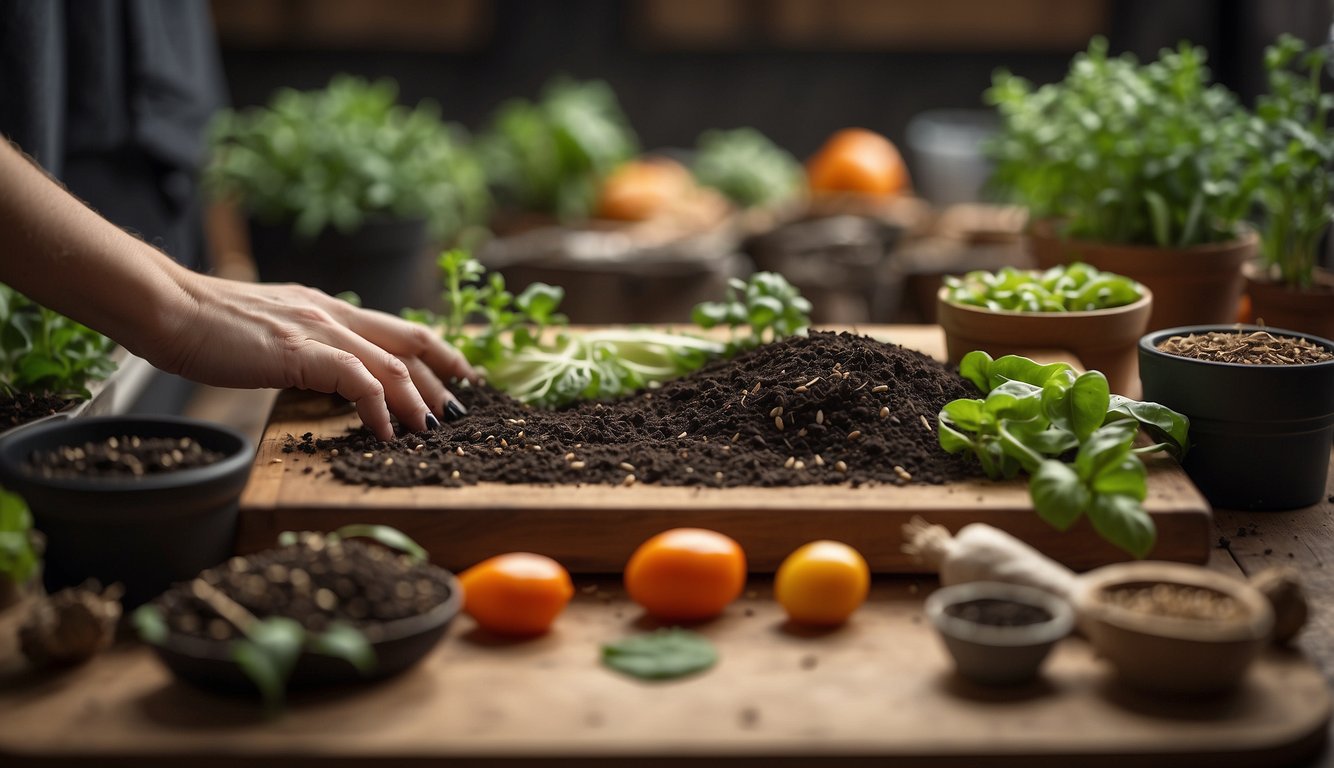
Growing your own food from scraps is a fun and rewarding way to reduce food waste and save money. But not all scraps are created equal. Some vegetables and fruits are better suited for regrowing than others. Here are some tips on how to select the best scraps for your garden.
Best Vegetables for Regrowing – Grow Your Own Food from Scraps
Certain vegetables are more likely to regrow from scraps than others. These include:
- Lettuce and other leafy greens: Lettuce, kale, and other leafy greens can be regrown from the base of the plant. Simply cut off the leaves and place the base in water or soil. New leaves will start to grow in a few days.
- Celery: Celery can be regrown from the base of the plant as well. Cut off the base, leaving about an inch of stalk attached. Place the base in water and wait for new shoots to appear.
- Onions: Onions can be regrown from the bottom of the bulb. Cut off the bottom inch of the onion and plant it in soil. New shoots will emerge in a few days.
Fruits and Other Plants
Many fruits and other plants can also be regrown from scraps. Here are some examples:
- Pineapple: Pineapple tops can be regrown by removing the top of the fruit and planting it in soil.
- Avocado: Avocado pits can be sprouted by placing them in water until roots and a stem emerge. The pit can then be planted in soil.
- Herbs: Many herbs can be regrown from cuttings or scraps. Simply place the cuttings in water until roots appear, then plant them in soil.
When selecting your scraps, make sure to choose healthy, fresh produce. Avoid scraps that are moldy, rotten, or dried out. With a little patience and care, you can turn your kitchen scraps into a bountiful garden.
Preparation of Scraps – Grow Your Own Food from Scraps
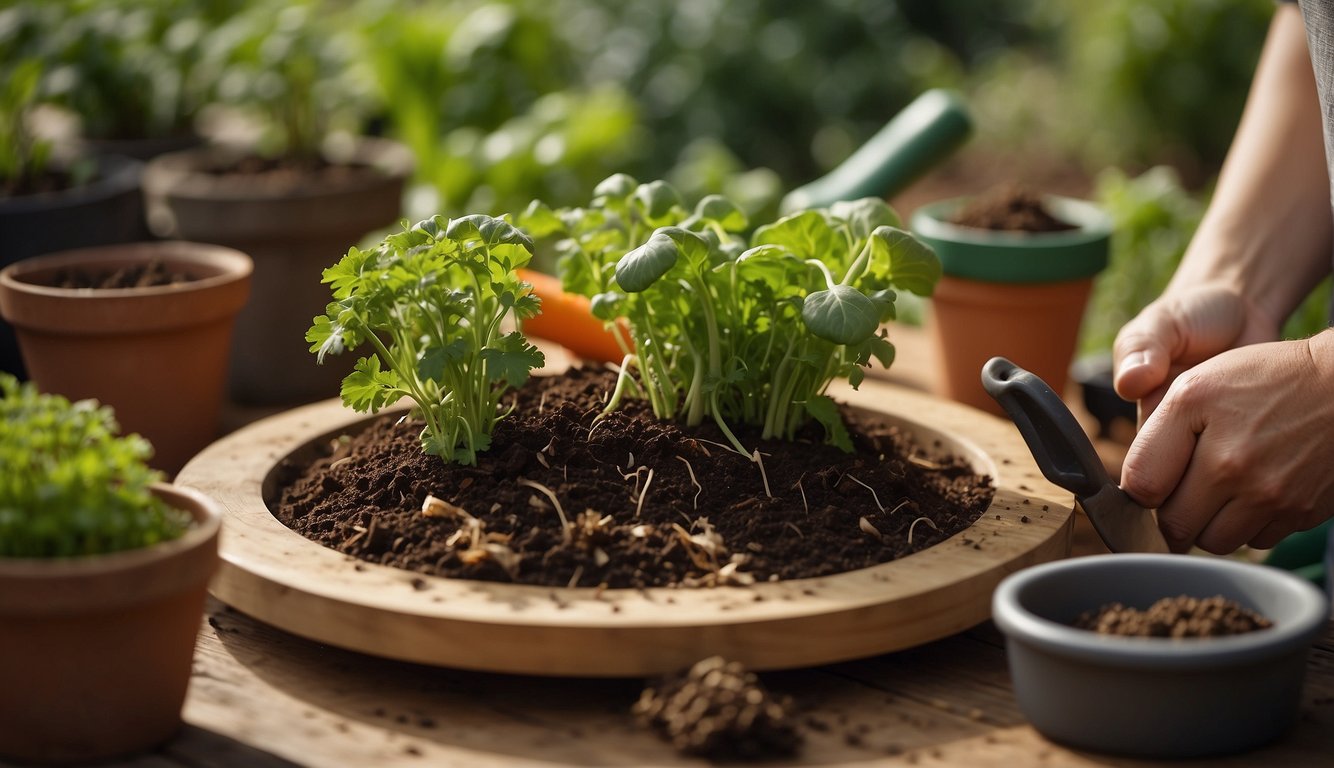
Growing your own food from scraps is an easy and sustainable way to reduce food waste and save money. Before planting, it’s important to properly prepare your scraps to ensure the best chance of success.
Cleaning and Cutting – Grow Your Own Food from Scraps
First, clean your scraps thoroughly to remove any dirt or debris. Then, cut them into the appropriate size for planting. For example, avocado pits should be cleaned and dried before being planted with the pointed end facing up. Potatoes and sweet potatoes can be cut into small pieces, each containing at least one “eye” or sprout.
Sprouting Techniques
Some scraps may require sprouting before planting. For example, ginger root should be soaked in water overnight to encourage sprouting. Bulbs, such as onion and garlic, should be separated into individual cloves before planting. Carrot tops can be placed in a shallow dish of water to encourage sprouting before planting.
Seeds, such as those from tomatoes or peppers, can be dried and saved for planting in the future. It’s important to properly store them in a cool, dry place to ensure viability.
By properly preparing your scraps, you can increase the likelihood of a successful harvest and enjoy the satisfaction of growing your own food from kitchen scraps.
Growing Mediums and Environment – Grow Your Own Food from Scraps
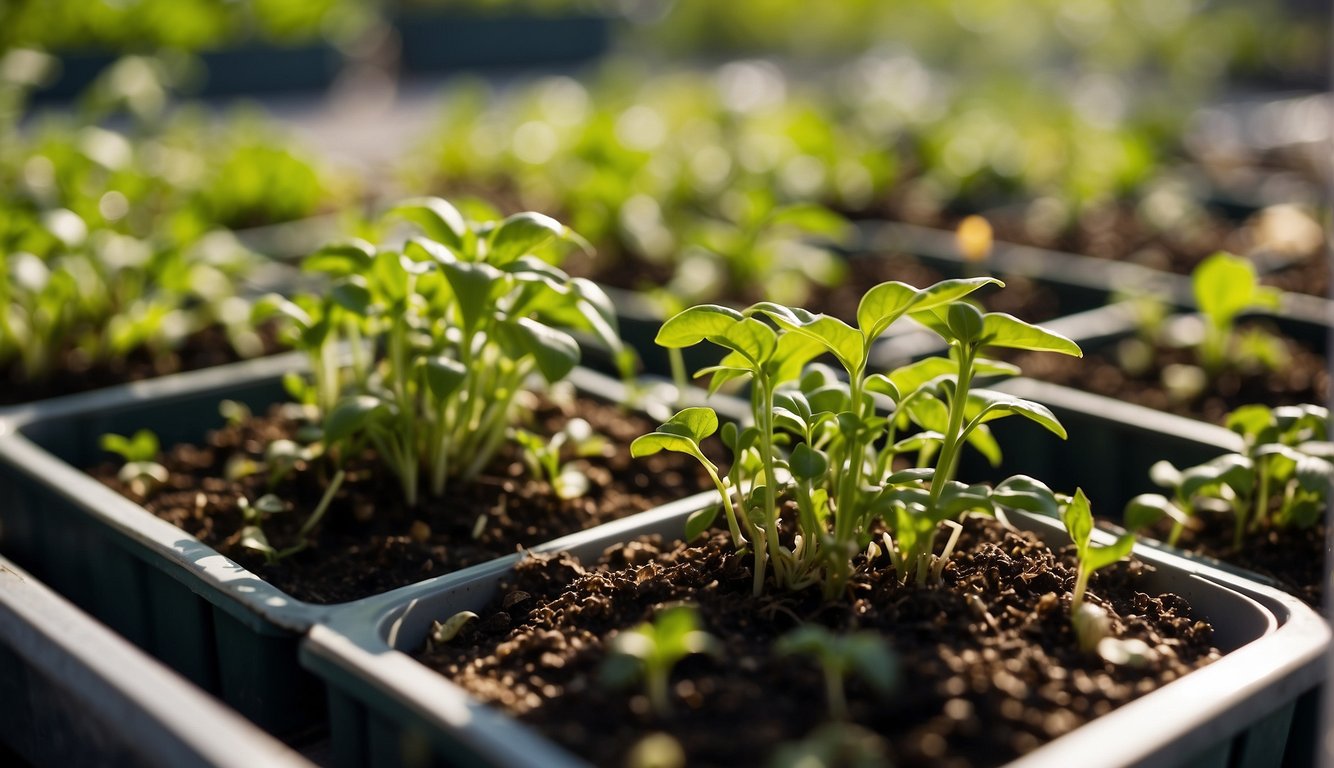
Soil and Composting
The right soil is essential for growing healthy plants from food scraps. I recommend using a high-quality potting mix that is rich in organic matter and nutrients. You can also create your own compost by collecting food scraps and yard waste in a compost bin. Composting is a great way to reduce waste and create nutrient-rich soil for your plants.
When using compost, make sure it is fully decomposed and has a crumbly texture. You can mix compost with potting mix to create a nutrient-rich growing medium for your plants. If you are planting directly in the ground, make sure to amend the soil with compost or other organic matter to improve soil health.
Watering and Drainage – Grow Your Own Food from Scraps
Watering is another crucial factor in growing plants from food scraps. Most plants prefer soil that is moist but not waterlogged. Make sure your container or garden bed has proper drainage to prevent water from accumulating and causing root rot.
When watering, make sure to water deeply and infrequently rather than giving your plants a little bit of water every day. This will encourage deeper root growth and help your plants become more drought-tolerant.
Light and Temperature
Light and temperature are also important factors to consider when growing plants from food scraps. Most plants need at least six hours of direct sunlight per day to thrive. If you are growing plants indoors, make sure to place them near a sunny window or provide supplemental grow lights.
Temperature is also important, and most plants have a preferred temperature range for optimal growth. Make sure to research the temperature preferences of the plants you are growing and provide appropriate growing conditions.
By following these guidelines for soil, composting, watering, and light, you can create a healthy environment for your plants to grow from food scraps.
Planting and Cultivation – Grow Your Own Food from Scraps

Planting Techniques – Grow Your Own Food from Scraps
When it comes to planting and growing food from scraps, there are a few key techniques to keep in mind. First, it’s important to choose the right plants for your garden. Some plants, like potatoes and garlic, are particularly easy to grow from kitchen scraps. Others, like tomatoes and peppers, may require a bit more care and attention.
Next, you’ll need to prepare your garden bed. Make sure the soil is rich and fertile, and that it drains well. You can also add compost or other organic matter to help improve soil health.
Once you’re ready to plant, simply place your scraps in the soil and cover them with a thin layer of soil. Be sure to water your plants regularly and keep an eye on their growth.
Caring for Your Growing Plants
Once your plants have started to grow, it’s important to provide them with the care they need to thrive. This may include regular watering, fertilizing, and pruning.
Watering: Most plants need about one inch of water per week. However, this can vary depending on the type of plant and the weather conditions in your area. Be sure to water your plants deeply and consistently, and avoid getting water on the leaves.
Fertilizing: To help your plants grow strong and healthy, you may need to fertilize them periodically. This can be done with a variety of natural or synthetic fertilizers, depending on your preferences.
Pruning: Some plants may require pruning to help them grow more bushy and full. This can be done by removing the top few inches of growth or by cutting back any dead or damaged leaves.
Troubleshooting Common Issues
Even with the best care, your plants may encounter some common issues. Here are a few tips for troubleshooting common problems:
- Pests: If you notice pests like aphids or caterpillars on your plants, you can try spraying them with a natural insecticide or picking them off by hand.
- Diseases: Some plants may be susceptible to diseases like blight or powdery mildew. To prevent these issues, be sure to keep your garden clean and free of debris, and avoid overcrowding your plants.
- Poor Growth: If your plants seem to be struggling to grow, there may be an issue with the soil or the amount of sunlight they’re receiving. Try adding more organic matter to the soil or moving your plants to a sunnier location.
By following these planting and cultivation techniques, you can grow your own food from scraps and enjoy fresh, healthy produce all season long.
Harvesting and Using Your Produce – Grow Your Own Food from Scraps
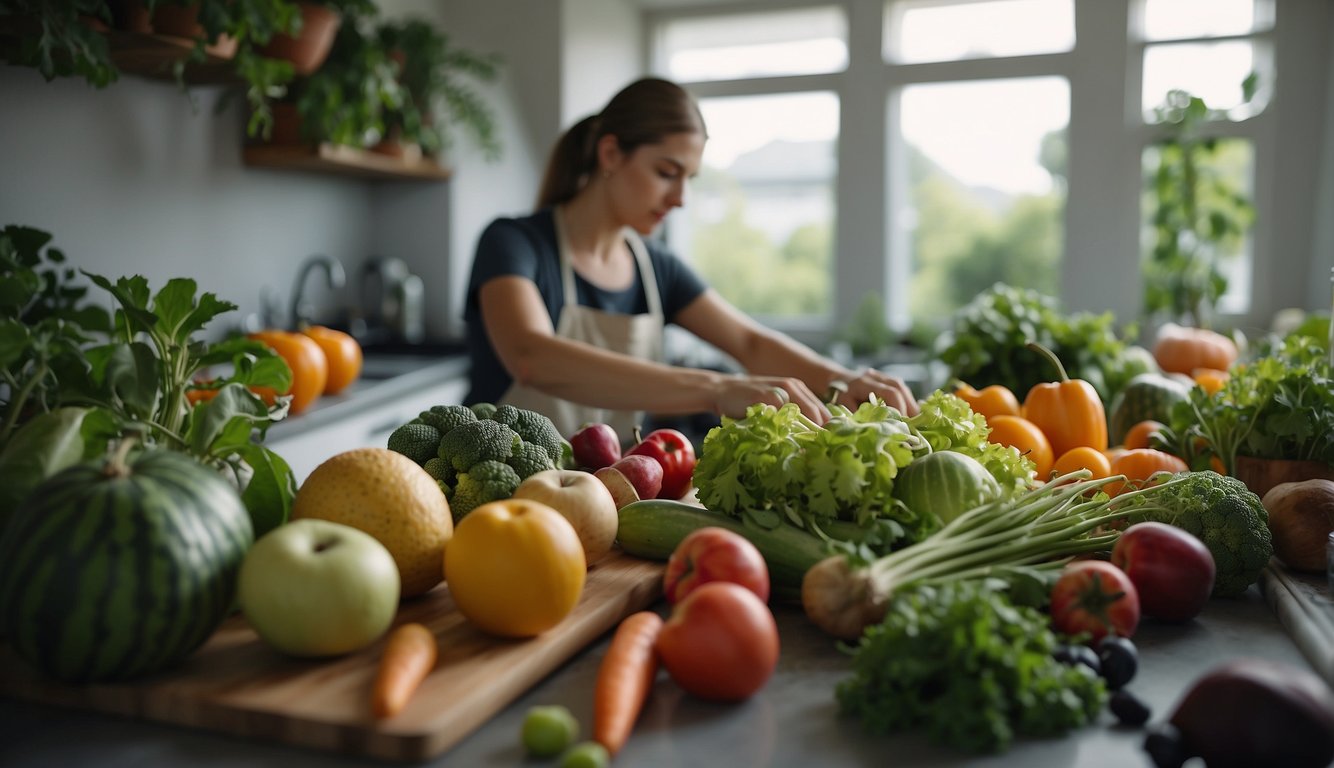
As you watch your produce grow, it’s important to know when and how to harvest it. Here are some tips to ensure that you get the most out of your organic produce:
When to Harvest
When harvesting fresh produce, it’s important to pick it at the right time to ensure that it’s ripe and full of flavor. For example, tomatoes should be picked when they’re fully ripe and have a deep red color. If you pick them too early, they won’t be as flavorful. On the other hand, if you wait too long to harvest them, they may become overripe and start to rot.
Another important factor to consider when harvesting your produce is the time of day. It’s best to harvest your produce early in the morning or late in the evening when the temperature is cooler. This will help prevent your produce from wilting and ensure that it stays fresh for longer.
Storing and Preserving – Grow Your Own Food from Scraps
Once you’ve harvested your produce, it’s important to store it properly to ensure that it stays fresh. One of the best ways to store fresh produce is to keep it in the refrigerator. For example, leafy greens like lettuce and spinach should be stored in a plastic bag in the crisper drawer of your refrigerator.
If you have more produce than you can use, you can also preserve it by canning, freezing, or dehydrating it. For example, you can make tomato sauce from fresh tomatoes and can it for later use. You can also freeze berries and other fruits for use in smoothies or baked goods.
Harvesting and using your own produce is a rewarding experience that can save you money and help reduce food waste. By following these tips, you can ensure that your organic produce stays fresh and flavorful for as long as possible.
Sustainable Practices and Benefits

As someone who cares about the environment and sustainability, I find it important to reduce organic waste and compost whenever possible. One way to do this is by growing your own food from scraps. Not only does this practice reduce food waste, but it also has various health and environmental benefits.
Reducing Organic Waste – Grow Your Own Food from Scraps
According to the EPA, about 66 million tons of food waste were generated in 2019 alone, with most of it ending up in landfills. By regrowing vegetables from scraps, we can reduce the amount of organic waste that ends up in landfills. This is because we are using the scraps that would otherwise be thrown away to grow new produce. This not only reduces the amount of organic waste in landfills but also reduces the amount of methane gas produced by decomposing organic waste.
Health and Environmental Benefits
Growing your own food from scraps also has various health and environmental benefits. For one, it allows you to have fresh produce at your fingertips without having to buy it from the store. This means that you can save money and reduce your carbon footprint by not having to transport produce from the store to your home.
Additionally, growing your own food from scraps allows you to have control over what goes into your produce. You can choose to grow your produce organically, without the use of harmful pesticides and chemicals. This means that you can have peace of mind knowing that your produce is healthy and safe to eat.
Growing your own food from scraps is a sustainable practice that can help reduce organic waste, save money, and provide you with fresh, healthy produce. By taking small steps towards reducing food waste, we can make a positive impact on the environment and our health.
Expanding Your Home Garden – Grow Your Own Food from Scraps

If you’ve been growing your own food from scraps and enjoying the benefits of fresh produce, it’s time to consider scaling up your efforts. Expanding your home garden can be a fun project that not only provides you with more fresh food but also helps you engage with the community.
Scaling Up Your Efforts – Grow Your Own Food from Scraps
One way to expand your home garden is to increase the number of crops you grow. You can start by selecting crops that are easy to grow and require minimal maintenance. Some popular options for beginners include tomatoes, lettuce, and herbs. As you gain more experience, you can try growing more challenging crops such as peppers, cucumbers, and squash.
Another way to scale up your efforts is to increase the size of your garden. You can do this by adding more raised beds or planting directly in the ground if you have the space. You can also consider vertical gardening, which allows you to grow more crops in a smaller area.
Engaging the Community
Expanding your home garden can also be a great way to engage with the community. You can start by sharing your surplus produce with neighbors, friends, and family. You can also consider donating your excess produce to local food banks or community gardens.
Another way to engage with the community is to start a community garden. This can be a great way to bring people together and promote healthy eating. You can work with local organizations and businesses to secure funding and resources for the garden.
Expanding your home garden can be a rewarding experience that not only provides you with fresh produce but also helps you engage with the community. By scaling up your efforts and engaging with others, you can create a thriving garden that benefits everyone.
Grow Your Own Food from Scraps
Today, we’re diving into the world of growing your own food from scraps. Get ready, it’s going to be a green ride!
Firstly, let’s talk about lettuce. Got a leftover lettuce stump? Don’t toss it! Place it in a bowl of water, and watch it sprout new leaves. It’s like magic!
Next up, the potato. Got a potato with eyes? Plant it! Those eyes will grow into new potato plants. It’s like a potato party in your garden!
And don’t forget about the pineapple. Yes, you can grow a pineapple plant from the top of a pineapple! It’s like a tropical vacation in your backyard!
So, next time you’re about to throw away those scraps, think again. They could be the start of your next garden! You can check our homepage here.
For more green tips, do visit the website theherbprof.com. Keep it green, folks!
References – Grow Your Own Food from Scraps
Little Herb Encyclopedia, by Jack Ritchason; N.D., Woodland Publishing Incorporated, 1995
The Ultimate Healing System, Course Manual, Copyright 1985, Don Lepore
Planetary Herbology, Michael Tierra, C.A., N.D., Lotus Press, 1988
Handbook of Medicinal Herbs, by James A. Duke, Pub. CRP Second Edition 2007
The Complete Medicinal Herbal, by Penelope Ody, Published by Dorling Kindersley
Check the Following Articles!
Feeding Tomatoes: Tips for Optimal Growth
How to Use Coffee Grounds in Potted Plants?
Basil and Tomato Companion Planting: Successful Pairing
Frequently Asked Questions – Grow Your Own Food from Scraps
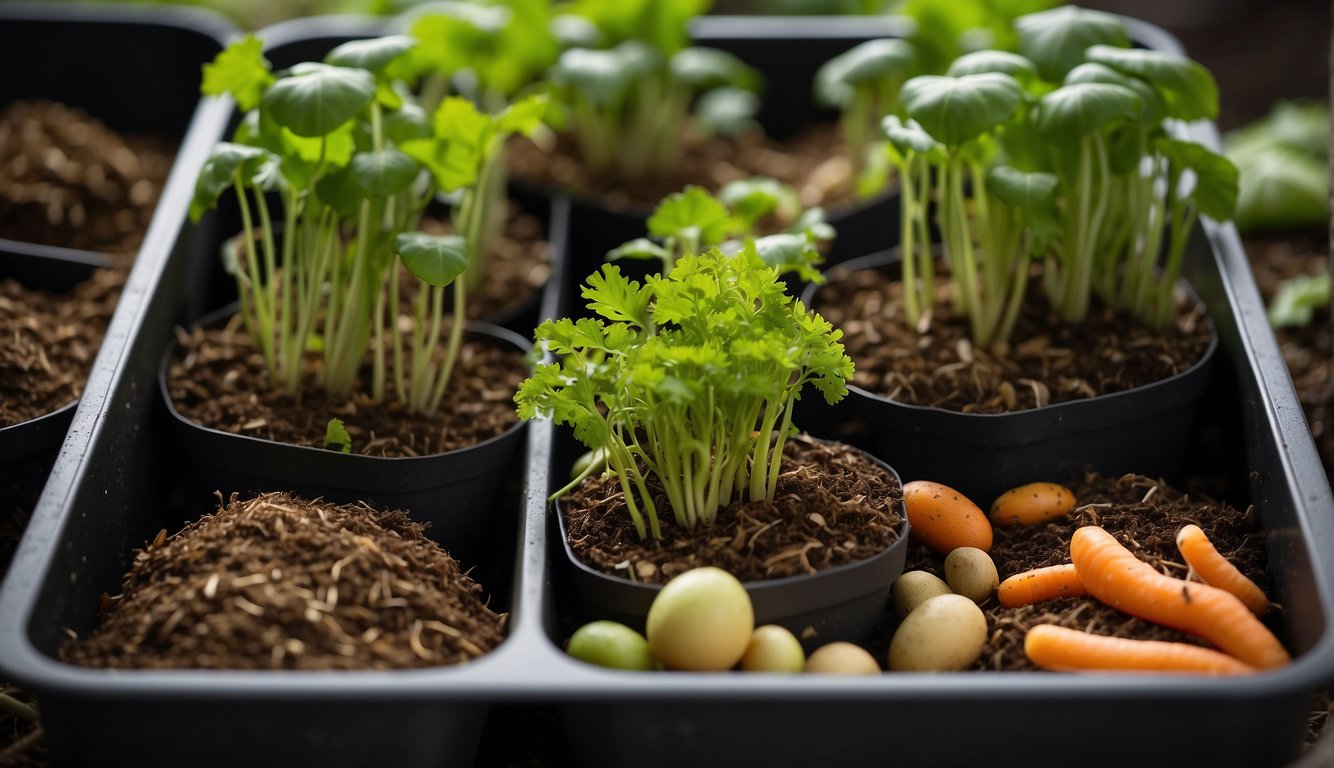
What vegetables can I easily regrow in water from their scraps?
There are several vegetables that can be easily regrown from their scraps in water. Some of the most popular ones include lettuce, celery, green onions, and bok choy. These vegetables can be regrown by placing their roots in a jar of water and placing the jar in a sunny location. Over time, new growth will appear and the vegetables will be ready to harvest.
Which fruits are suitable for regrowing from leftover pieces?
While not as many fruits can be regrown from scraps as vegetables, there are still a few that are suitable for regrowing. Pineapple, for example, can be regrown from the top of the fruit, while avocado can be regrown from the pit. Mango, papaya, and lemon can also be regrown from their seeds.
How can I regrow vegetables indoors using scraps?
Regrowing vegetables indoors is a great way to have fresh produce year-round. To do this, simply place the vegetable scraps in a container with soil and water regularly. Some vegetables that are particularly well-suited for indoor regrowing include lettuce, spinach, and herbs like basil and cilantro.
Can plants that regenerate themselves be started from grocery store produce cuttings?
Yes, many plants that regenerate themselves can be started from grocery store produce cuttings. For example, ginger root and garlic can both be grown from individual cloves, while potatoes can be grown from the eyes of the potato. With a little bit of patience and care, you can turn your grocery store produce into a thriving garden.
Is growing food from kitchen scraps a cost-effective practice?
Growing food from kitchen scraps can be a cost-effective practice, as it allows you to turn what would otherwise be waste into fresh produce. While it may take some time and effort to get started, regrowing vegetables and fruits from scraps can save you money in the long run and provide you with a sense of satisfaction and self-sufficiency.
What’s the simplest type of food scrap that I can turn into a growing plant?
One of the simplest types of food scraps that you can turn into a growing plant is the bottom of a lettuce or cabbage head. To do this, simply cut off the bottom of the head and place it in a container with water. Over time, new growth will appear and you’ll have a fresh supply of lettuce or cabbage.
